Genre: Action/Flight
Publisher: UbiSoft
Developer: IR Gurus/Thatgame
Release Date: September 27, 2005
Buy 'HEROES OF THE PACIFIC': Xbox | PC | PlayStation 2
People love World War II games.
The War to End All Wars has been accurately represented in videogame form for years. Call of Duty and Brothers in Arms, the most popular offerings, represent the infantryman, the hardened grunt that powered much of the Allied war effort. WWII games have sold millions of copies over the years, ranging from real-time strategy to lone-wolf shooter to squad-based action. Despite the airplane's crucial role in winning the war, flight games based in the period (LucasArts' Secret Weapons Over Normandy comes to mind) have not enjoyed as much success as their twitch-action shoot-'em-up brethren. Heroes of the Pacific may not be the crossover hit that puts WWII flight games on the map, but it definitely deserves attention.
The United States entered World War II after the Japanese launched a surprise attack on the Hawaiian naval port Pearl Harbor on December 7, 1941. Heroes begins as Lt. William Crowe, a young farm boy-turned-pilot, jumps into a plane to defend Pearl Harbor from the sudden assault. As the game progresses and the war drags on, we follow Crowe as he matures from a green, untested rookie to an elite ace. Fairly clichéd, but it doesn't take away from the game; the flying action stands on its own. You never really care much about Crowe as a character, but the bravery of the real-life pilots who risked their lives is showcased throughout Heroes of the Pacific.
The first thing you'll notice about Heroes is the authentic atmosphere that saturates every part of the game. The main menus are set up like a propaganda film from the era, encouraging the player to "support the war effort" or "remember our boys" while you're tweaking the options screen or selecting a mission to tackle. Cut scenes come to life from a scrapbook filled with memories of the war, perhaps gathering dust in an attic somewhere, lost but never forgotten. Actual film footage of battle and military milestones is showcased between missions. Heroes' graphics are awesome; from cut scenes to fiery air combat, the PS2's aging processor is still capable of exciting a gamer.
The attention to historical accuracy is admirable, but in some cases unfortunate. Japanese-Americans may be offended by some terms that could be considered derogatory. Yes, those terms were acceptable at the time, perhaps even encouraged, but now they seem like relics of a different age, symbols of a wound that took time to heal.
Most of the game's shortcomings disappear when you take to the skies. Brilliant controls and forgiving physics make Heroes' dogfights blisteringly fast and intense. Each plane's handling feels noticeably different; a Japanese Zero flies nothing like an American P41. There are four different aircraft types to choose from, each suited to a different mission. Speedy fighters are essential for taking down enemy squadrons, dive bombers can destroy carriers, and torpedo bombers are your submarine and destroyer killers. Each has its own characteristics and unique controls; bombers are slow, but pack heavy explosives, while fighters bristle with machine guns and small rockets.
Heroes of the Pacific walks the line between simulation and arcade. Your machine guns have unlimited ammo, and secondary weapons refill themselves after a short wait. Your craft can bounce off the ground once or twice before exploding, and planes have a "war speed" turbo button that I doubt existed in 1941. On the other hand, the game gives an accurate feel for the planes of the time. Fans of Ace Combat and other games featuring contemporary aircraft may be put off by the simplicity of Heroes' flying machines. Pilots had little sophisticated technology to assist them; dogfights relied mostly upon individual skill and instinct. For example, guns can be customized; you can choose a narrow or wide spread for your bullets, and for certain missions, the "ground attack" option (which points the machine guns slightly downward) comes in mighty handy.
Varied missions keep things fresh. Whether you're escorting an admiral to safety, defending an airstrip on a lonely island, or leading a surprise attack, Heroes will keep you entertained. New aircraft are unlocked after each stage, both friendly and enemy (which can be used in multiplayer). Upgradeable planes give an incentive to do well; after completing a mission, you're awarded a certain number of upgrade points, which can be used to unlock beefier versions of planes you already own. Believe me, you'll need them.
After a certain point, Crowe is granted his own wingmen. With a push of the D-pad, you can give simple orders, like "attack at will," "defend" their current location, and "get into formation." These guys do a good job of watching your back, and they aren't imbeciles in combat like so many other games' squad members. They really prove their worth later on, when you have way too much to do at once. (More on that later.)
Heroes of the Pacific doesn't win the war without a few casualties, unfortunately. Load times are intrusively long, causing me, on more than one occasion, to tap my controller against my leg in annoyance. In a semi-repetitive genre such as this, you'd want to minimize the time a player could spend thinking about turning something else on. By no means are they the longest I've ever encountered, but they break up the action, making what should be a smooth transition between stages a jarring, frustrating gap.
The biggest problems with the gameplay lie in the sometimes confusing objectives and steep difficulty. There's just too much going on at once for one pilot to deal with. Your wingmen do take some of the burden, but the majority of goals fall to you personally. You'll be attempting to destroy a vital objective while five others scream at you to get in gear and help them. The problem is made worse by the confounding map/objective screen. Your overabundance of responsibility may beg the question, is the game accurately depicting the chaos and disorder of a battlefield, or simply heaping objectives upon the player to extend the experience? You'll have to decide for yourself.
Where the game really gets kicked into overdrive, however, is in multiplayer mode. Again, the sheer number of combatants can become daunting, and your "twitch" muscles will immediately begin to over-control the plane. This will, more often than not, result in your going down in flames so I would sincerely recommend playing offline for a while before diving into the online portion.
Once you get the feel of how fast things can go, the multiplayer aspect of Heroes is immediately felt. Communication between airmen is common, and more than once, I found myself saving (or being saved by) a teammate. The trick is in seeing who is who before the IFF (Identification Friend or Foe) kicks in under the reticule. Once you reach a point where you can tell who your friends are by looking around, you will be able to concentrate on the job at hand… namely, killing anything that doesn't display your colors.
These skills come into play in any of five different game modes. The classic way to get up and shoot down is the Dogfight, where it's every man for himself, and at the end of the round, the pilot with the most kills wins. This is by far the most difficult version of Heroes online. Trust no one.
Team Dogfight is my preferred mode of play, where players are split into two equal teams (give or take a plane), and simply have at it. Friendly fire is always on, so make sure you don't "score a goal in your own net," if you know what I mean. Take it from me; it's really hard to lose one of these by one point, knowing that you accidentally fragged Lieutenant Neidermeyer.
Capture the Flag is another fun option, and if you have ever played any shooter online, you know what a CTF match is all about. Should I waste your time explaining it again? I think not.
Fox and Hounds is an intriguing game, and if you've ever played "Kill the Carrier" in the schoolyard, you'll get this one. One player starts as "The Fox" and tries to stay alive for as long as possible, while shooting down target balloons for extra time. Everybody else is a hound, trying to take the fox out. The player who causes the most damage to the fox becomes the fox, and the previous fox becomes a hound. At the end of the round, the player with the highest accumulated "Fox Time" wins. This is not only nasty, it can be down-and-out brutal!
Last, but not least, in the menu of multiplayer mayhem is Scratch One Flat Top. In this variant, the teams are split, and each has to defend one aircraft carrier while trying to destroy the opposition's carrier. The real fun here is in the balance because if we all go after the enemy's ship, who will protect ours? This one is an acquired taste, but once sampled, can yield very satisfying results.
Though far from perfect, Heroes of the Pacific does a great job of combining a fun, loose aerial shoot-'em-up with real-life battles from the Pacific Theater of World War II. Looking for a week or two of simple, white-knuckle fun from 50 years ago, with nothing but your gunsight and your wits against the entire Japanese navy? Sign up for a tour of digital duty and become one of the Heroes of the Pacific. Your country is waiting for you .…
Score: 8.3/10
More articles about Heroes Of The Pacific


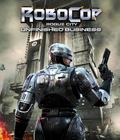
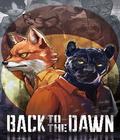
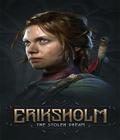
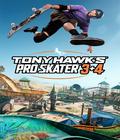
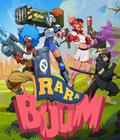
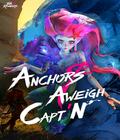
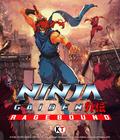
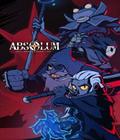

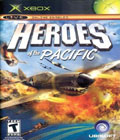 Beginning with the attack on Pearl Harbor, this flight combat game puts players in the middle of some of the most intense naval conflict in WWIIs Pacific Theater.
Beginning with the attack on Pearl Harbor, this flight combat game puts players in the middle of some of the most intense naval conflict in WWIIs Pacific Theater.















































